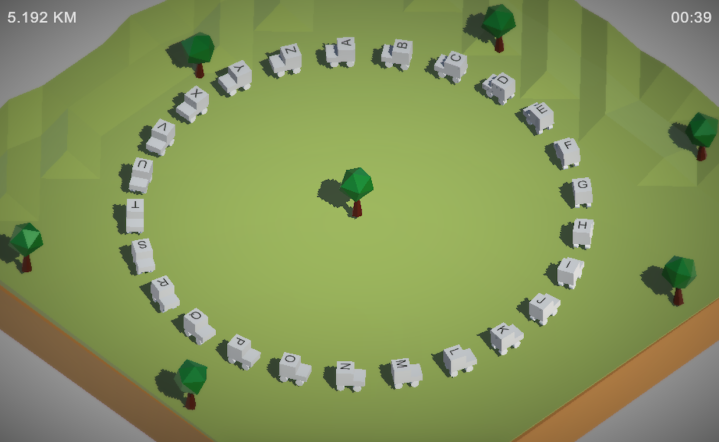
The premise is painfully simple — at the onset of the game, there exist “26 cars autonomous cars driving around in a neat little circle.” Humans can play by pressing a letter on a keyboard, which gives them control over a car. Nearly instantaneously, the game’s creators point out, “you will see the effects your erratic human driving causing grid lock or even accidents. The more people play (up to 26, if you can fit and have a good enough keyboard) the more chaos ensues.”
While the setup is most similar to that of highway driving, where relatively autonomous driving takes place, the point still stands that machines are probably better than humans when it comes to safe driving practices. With the Error-Prone model, players are given a chance to see just how much closer in proximity machine-driven cars can be, given better reaction times. This would not only increase efficiency on the road, but also capacity.
As Paul Lewis, director of policy and finance at the Eno Center for Transportation, told Wired, “A lot of freeway congestion today isn’t necessarily caused by an accident, it’s just caused by too many cars on the road, and you get a lot of bunching. Somebody slams on the brake too hard, and it creates a wave of traffic that ripples throughout the system.” With autonomous cars, however, this would likely be a much less common occurrence.
While the only way to win at Error-Prone, its creators say, “is to not play at all,” this isn’t exactly an option for the everyday driver looking to get from point A to point B in the absence of self-driving cars. So until those come out in droves, we’ll just have to make do, and hope that our skills on the road are better than our skills with the keyboard in Error-Prone.
Editors' Recommendations
- Tesla Autopilot vs. full self-driving: What’s the difference?
- Beleaguered robotaxi startup Cruise lays off quarter of workforce
- Cruise’s robotaxi service suspended by California regulator
- Waymo expands robotaxi service area in San Francisco
- Cruise autonomous vehicle drives over woman just after she was hit by another car

